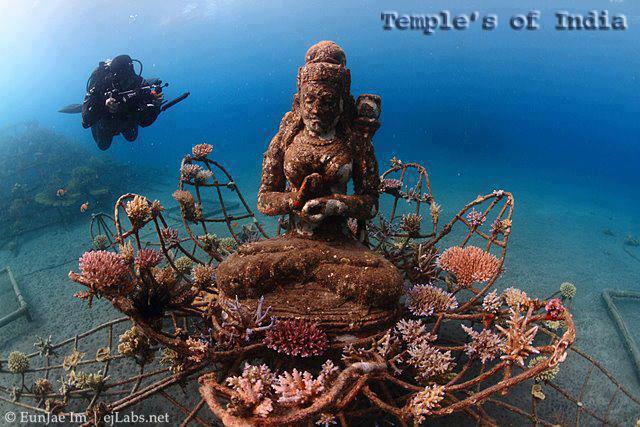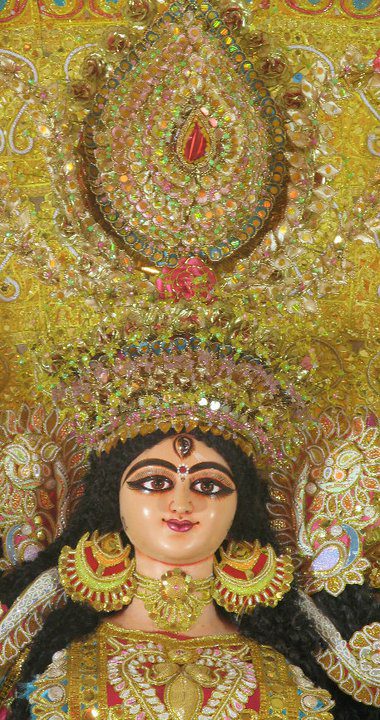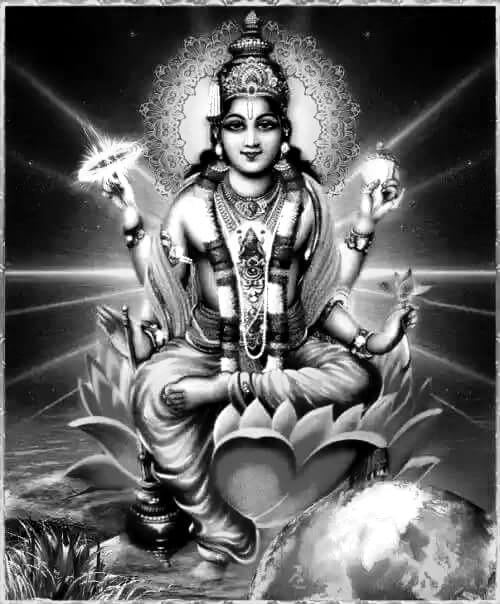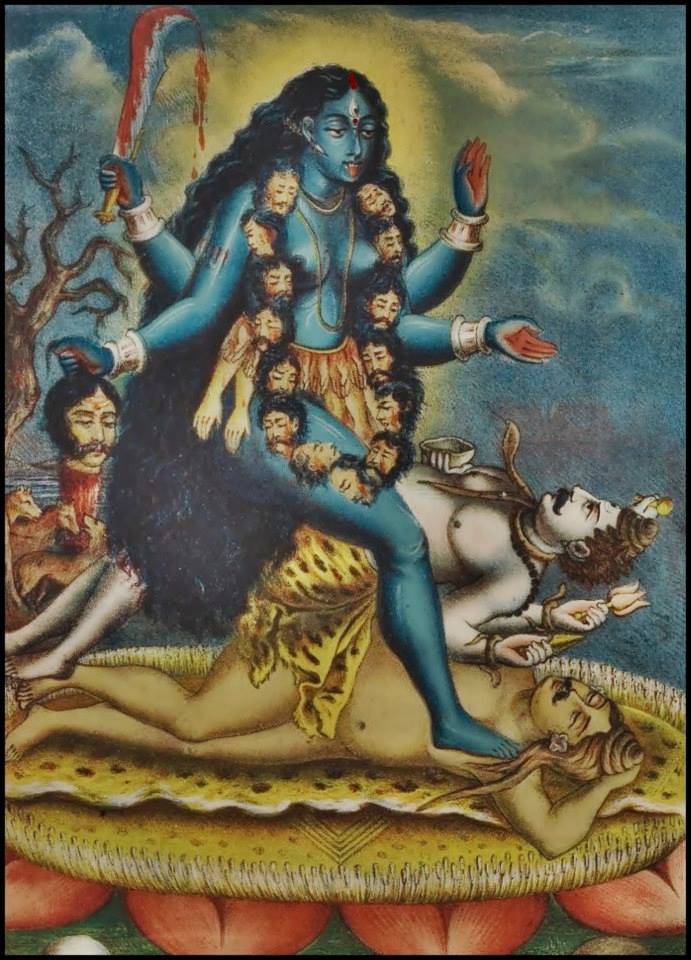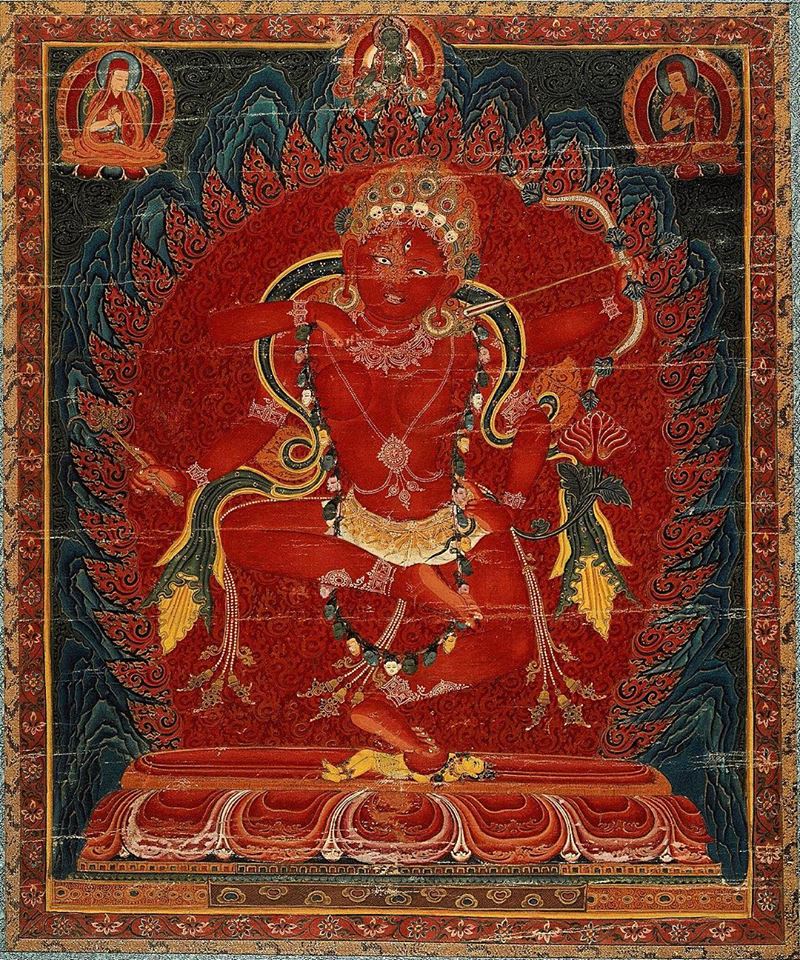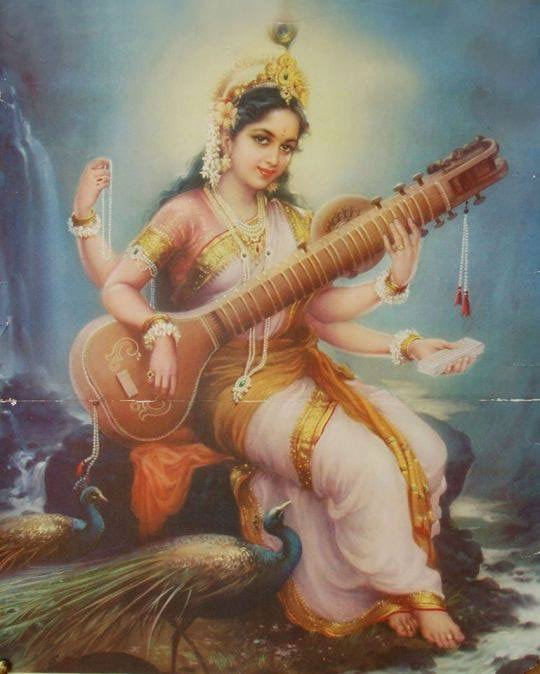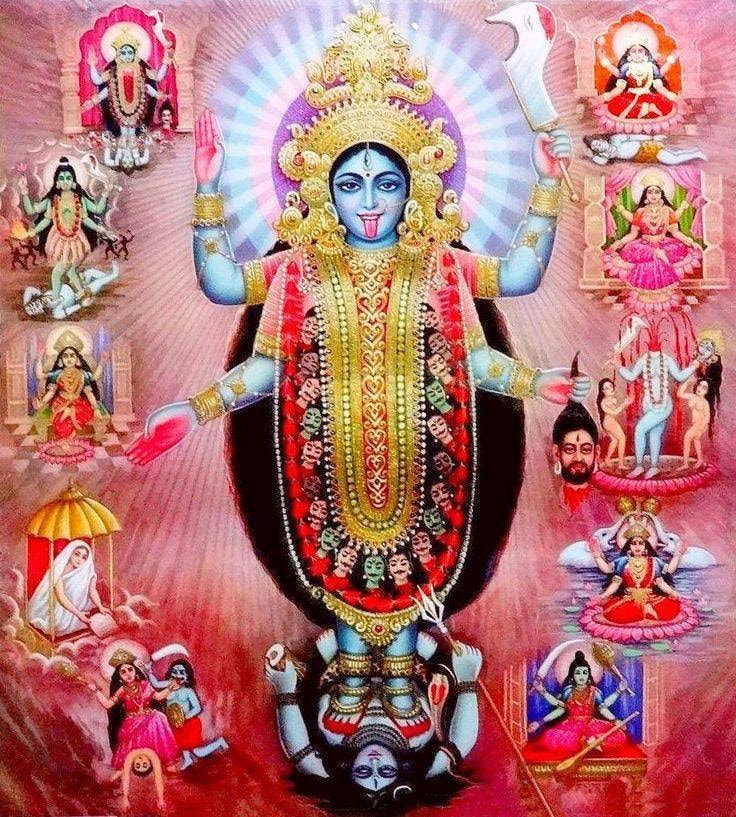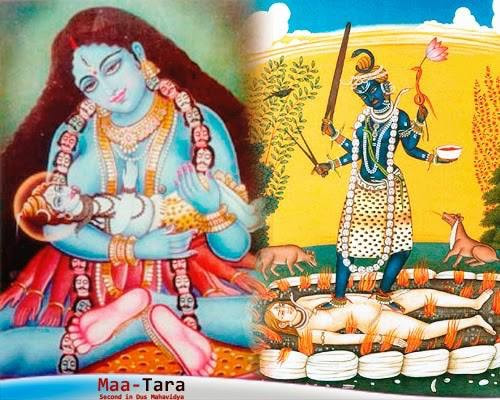This Hindu tantra is a brief but often quoted work of ten patalas or chapters. It is referred to, for example, in the Matrikabhedatantra. It also contains the daily pujas of Tara, Kali and Shiva, as well as information about yoga.
Patala one deals with the ten Mahavidyas, a subject which is returned to in chapter 10 of this tantra.
These major forms of the goddess are described in the Todala Tantra as Kali, Tara, Sundari, Bhuvaneshvari, Cchinnamasta, Bhairavi, Dhumavati, Bagala, Matangi, and Kamala.
According to Alain Danielou’s Hindu Polytheism, these ten aspects of Shakti are the epitome of the entire creation.
Chapter 10 also outlines their consorts, although Dhumavati, the widow form, is not allocated a consort.
At the close of the chapter comes the essential tantrik view that Shiva, as the witness is not involved in creation, maintenance or withdrawal.
Many tantras, particularly those associated with Bengal, speak of ten major aspects of the goddess, the Mahavidyas.
Vidya means knowledge but in the tradition this word is synonymous with both a Devi and her mantra form.
Mantra is divinity in its purest form as sound, yantra is divinity represented as diagram and the dhyana, or meditation form, is considered to be the grossest representation.
But these forms are given as ways of concentrating the mind easily.
The Mahavidyas are, in order, Kali, Tara, Sodashi (Tripurasundari), Bhuvaneshvari, Cchinnamasta, Bhairavi, Dhumavati, Bagalamukhi, Matangi and Kamala. Each, except Dhumavati, who is a widow, has her own form of Shiva.
1. Kali.
Seated on a corpse, greatly terrifying, laughing loudly, with fearful fangs, four arms holding a cleaver, a skull, and giving the mudras bestowing boons and dispelling fear, wearing a garland of skulls, her tongue rolling wildly, completely naked (digambara – clad in the directions), thus one should meditate on Kali, dwelling in the centre of the cremation ground.
2. Tara –
Akshobhya. Seated in the pratyalidha asana, seated on the heart of a corpse, supreme, laughing horribly, holding cleaver, blue lotus, dagger and bowl, uttering the mantra Hum, coloured blue, her hair braided with serpents, the Ugratara.
3. Sodashi.
4. Bhuvaneshvari.
Like the red rays of the rising sun, with the moon as her diadem, and with three eyes, a smiling face, bestowing boons, holding a goad, a noose and dispelling fears, thus I hymn Bhuvaneshi.
5. Cchinnamasta.
6. Bhairavi. Her head garlanded with flowers, she resembling the red rays of 1,000 rising suns, smeared with red, holding milk, book, dispelling fears and giving boons with her four hands, large three eyes, beautiful face with a slow smile, wearing white gems, I worship Bhairava.
7. Dhumavati.
The colour of smoke, wearing smoky clothes, holding a winnowing basket, dishevelled clothes, deceitful, always trembling, with slant eyes, inspiring fear, terrifying.
8. Bagalamukhi.
Three eyes, wearing yellow clothes and gems, moon as her diadem, wearing champaka blossoms, with one hand holding the tongue of an enemy and with the left hand spiking him, thus should you meditate on the paralyser of the three worlds.
9. Matangi.
Dusky, beautiful browed, her three eyes like lotuses, seated on a jewelled lion-throne, surrounded by gods and others serving her, holding in her four lotus-like hands a noose and a sword, a shield and a goad, thus I remember Matangi, the giver of results, the Modini.
10. Kamala.
With a smiling face, her beautiful lily-white hands hold two lotuses, and show the mudras of giving and dispelling fear. She is bathed in nectar by four white elephants and stands upon a beautiful lotus.
“Shri Devi said: Lord of the world, lord of all knowledge, tell of the worship of the mahadevas in the three worlds. On the right hand side of each are various forms. Mahadeva, speak of each one separately.
“Shri Shiva said: Listen, beautiful one to Kalika’s Bhairava. On Dakshina’s right, worship Mahakala, with whom Dakshina is always in love union. Worship Akshobya on the right of Tara. Devi, the kalakuta poison produced by the churning of the ocean caused great agitation to all the gods and their consorts.
“Because he destroyed the agitation caused by the deadly yellow poison, he is known as Akshobya. Thus Tarini, the Mahamaya, always delights in her consort.
“On the right hand side of Mahatripurasundari, worship Shiva in his five-faced form with three eyes in each of the faces, O lady of the gods. She always delights in sexual union with her consort, O Mahadevi. For this reason, she is known as the famous Pancami. On the right side of Shrimad Bhuvaneshvari, who in the heavens, on earth, and in the underworlds is known as the Adya, worship Tryambaka.
She makes love with Tryambaka in these places, it is said. He and his Shakti are mentioned and worshipped in all tantras. On Bhairavi’s right side is Dakshinamurti. By supreme efforts, one should certainly worship that five faced one.
“On Cchinnamasta’s right side, worship Shiva-Kabandha. By worshipping him, one becomes lord of all siddhi. The Mahavidya Dhumavati is a widow. Seated on the right of Bagala is the Maharudra, with one face, who dissolves the universe. On Matangi’s right side is Shiva Matanga, similar to Dakshinamurti, the form of cosmic bliss. He who worships Sadashiva, the Vishnu form, on Kamala’s right side becomes perfect, there is no doubt about this.
“On Annapurna’s right hand side, worship Brahma, the giver of great liberation, the god with ten faces, the Maheshvara. On the right side of Durga, worship Narada. The letter Na causes creation, the letter Da maintenance, while the letter Ra causes dissolution. So he is known as the famour Narada. Worship the Rishi who “gave birth” to the other vidyas on their right hand side.”
(Todala, chapter one)
Shiva, in the second chapter, tells Shakti of yoga and describes the body as resembling a tree. There is no difference between the macrocosm or the microcosm. The supreme mantra is hamsa, equivalent to 21,600 breaths in a day. The letter Ha is Shiva while the letter Sa is Shakti. According to ancient texts, breath is time. An individual inhales once every four seconds and exhales once every four seconds. One is a solar breath and one a lunar breath.
In chapter three, the different forms and mantras of Kali are described, along with the sandhya (twilight) mantras of both Kali and Tara. These are the four tantrik twilights of dawn, midday, sunset and midnight, when the currents of pranayama change direction and the sadhaka can do his or her puja knowing he is close to the in-betweenness which is the essence of tantra. Kali’s daily rites are detailed.
The fourth chapter deals with Tara’s puja, giving a beautiful meditational image of her as situated in the centre of a lovely island, seated on a lion throne under a jewelled pavilion. Chapter five turns to Shambhunatha (Shiva).
In this yuga, sadhakas should not worship his form known as Nilakantha, an aspect of Shiva. At the churning of the milk ocean, at the beginning of time, Shiva swallowed the poison which stained his throat a deep blue. It is unclear, however, why this tantra prohibits his worship. One should never worship Shakti unless Shiva is first worshipped, preferably with a clay linga.
In chapter six, Shiva gives the vasana or inner meaning of Kali and Tara mantras Krim and Strim. The different letters of the mantras are placed on separate parts of the human body. The seventh chapter speaks of yoga and of the seven islands and of their locations in the body. Kamarupa is in the muladhara cakra. Other sacred centres are also situated in the body.
The 51 letters of the alphabet are the sacred pithas within the body, each associated with one of the parts of the Devi which fell to earth when sliced by the discus of Vishnu.
Chapter eight continues the previous topic. The body is permeated with millions of nadis and the elements have their place there too. In chapter nine, Shiva speaks of the Sundari mantra.
Even though Shiva has already spoken of it in the Nitya Tantra, Shakti asks him to reveal its true meaning. Shiva says that 21,600 is the head of the letters of the alphabet and the true rosary in the thousand petalled lotus. Details of the rosary follow. Using tantrik methods, sadhakas can be both liberated and enjoy.
The last chapter equates Vishnu’s ten incarnations with the ten Mahavidyas. Durga is the Kalki, the last of the avatars of Vishnu. He is yet to come, and when he does he will be born in Shambhala. He will ride a white horse and hold a sword which blazes like fire, bringing back to the planet harmony, according to the Agni and other Puranas. Kali’s consort is Krishna.
“Shri Devi said: Lord of gods, guru of the universe, tell me of the ten avatars. Now I want to hear of this, tell me of their true nature. Paramesvara, reveal to me which avatar goes with which Devi.
“Shri Shiva said: Tara Devi is the blue form, Bagala is the tortoise incarnation, Dhumavati is the boar, Cchinnamasta is Nrisimha, Bhuvaneshvari is Vamana, Matangi is the Rama form, Tripura is Jamadagni, Bhairavi is Balabhadra, Mahalakshmi is Buddha, and Durga is the Kalki form. BhagavatÌ Kali is the Krishna murti.” (Todala, chapter 10)
Thanks to Mike Magee
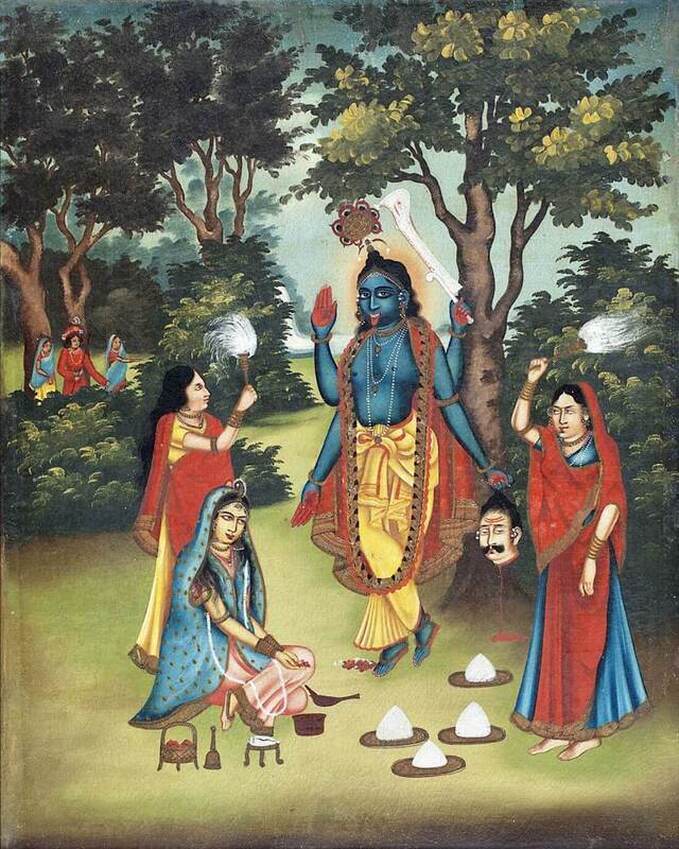




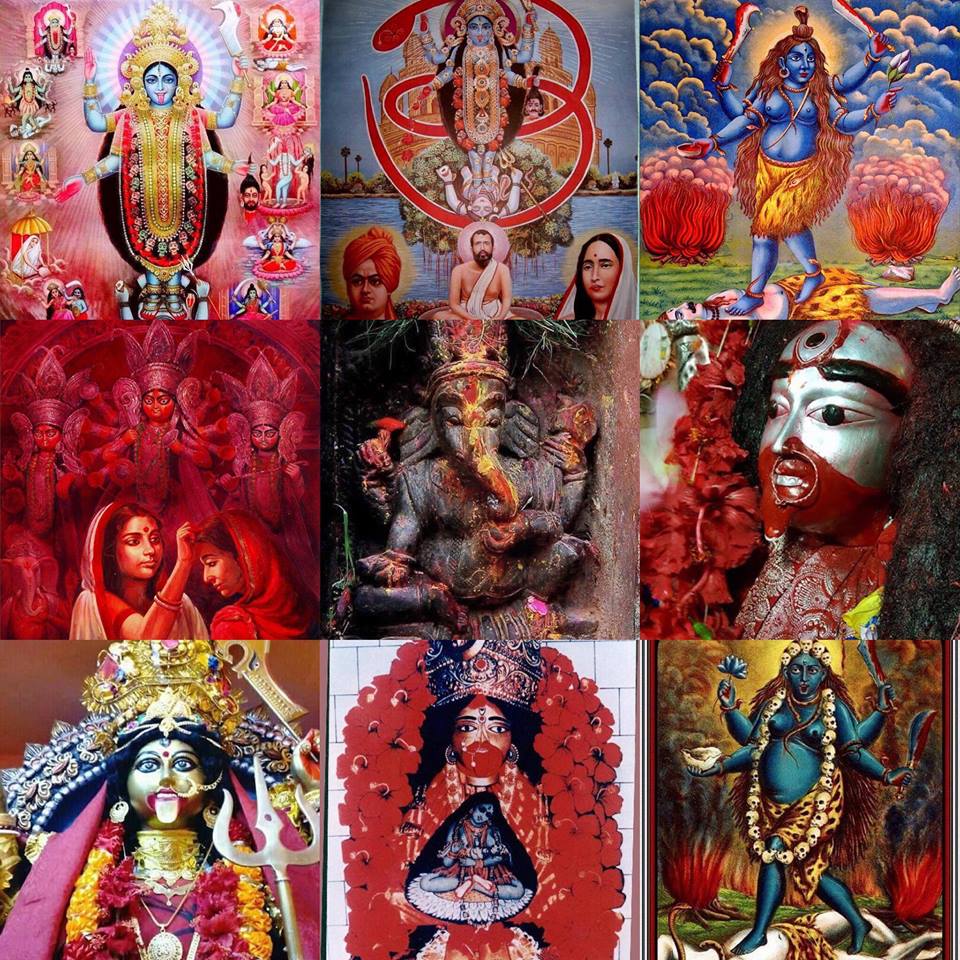
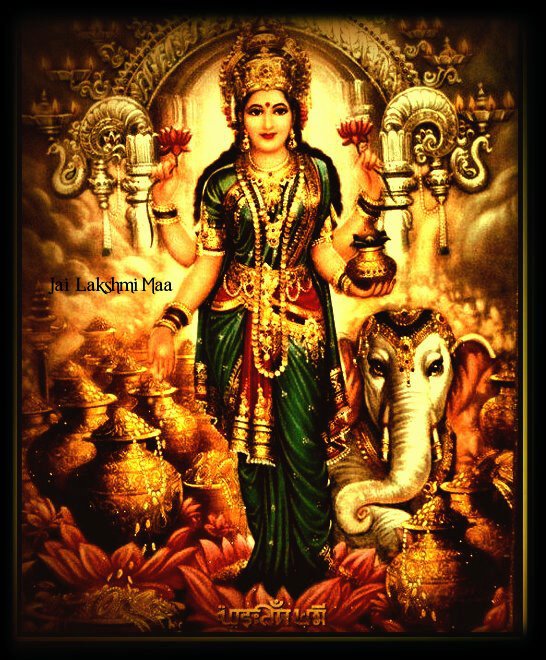

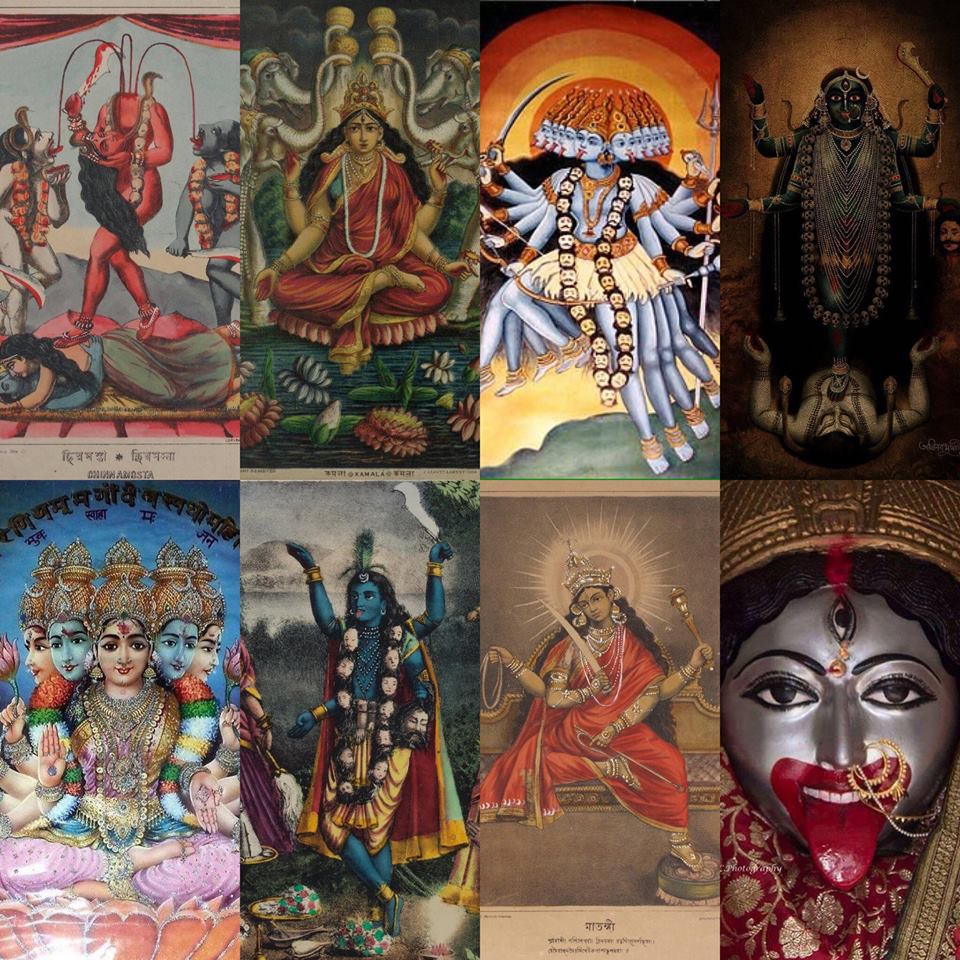
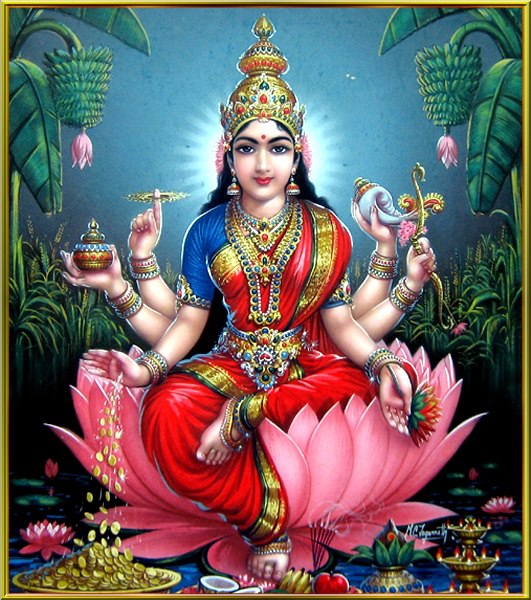



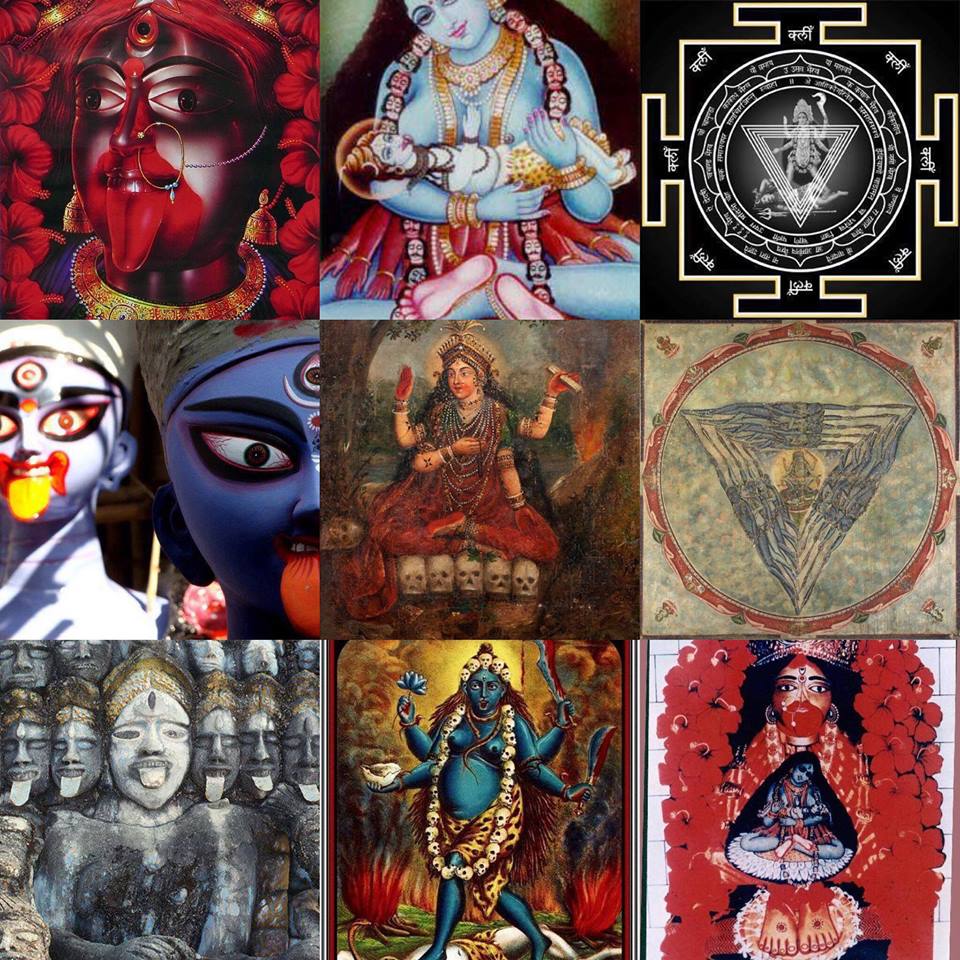


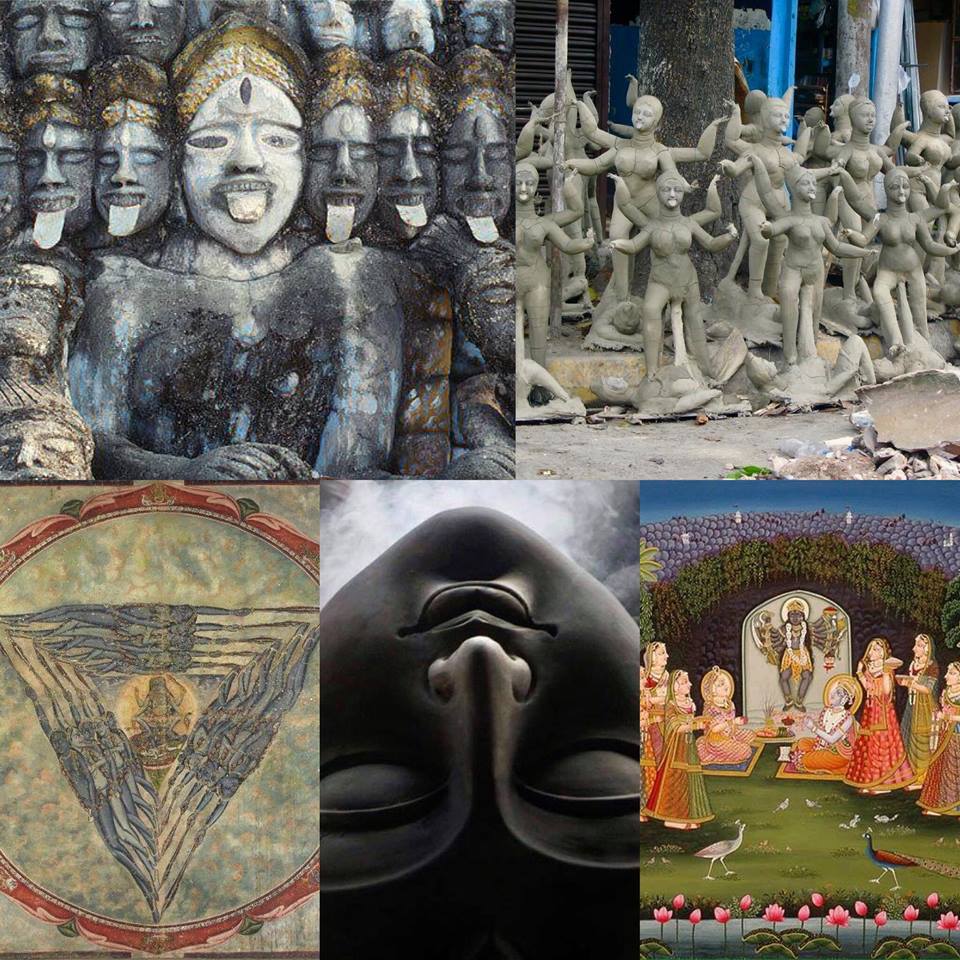







 RSS Feed
RSS Feed























